Wastewater Rules and Regulations Reference
51.075 MONTHLY CAPITAL IMPROVEMENT SURCHARGE
(A) All classifications of users subject to a capital improvement surcharge shall pay the applicable surcharge in addition to other sewage service charges imposed by this chapter. Capital improvement surcharges shall remain in effect until the cost of the intended installations, adjustments or improvements to the water pollution control utility has been retired and the capital improvement surcharge area has been retired.
Why does City Utilities charge Monthly Capital Improvement Surcharges?
City Utilities utilizes “Monthly Capital Improvement Surcharges” (also referred to as capital charges) to reimburse itself and/or developers that City Utilities’ partners with for the cost of capital improvements made in an area done in anticipation of future customers. Typically, areas where capital charges are used are those that require more investment than normal for extending infrastructure.
- City Utilities believes that the cost of the improvements should primarily be paid by those future-benefitting customers once they connect (growth pays for growth).
- City Utilities believes that taking input from developers regarding the building market at the time is important. If City Utilities and/or the Developer were to put all the capital costs into the cost of the lot or the connection fee and require it to be paid up front, the cost of the lot or fee would be significantly higher and would make the sale of lots less competitive.
- City Utilities believes that around $20-25/month is the maximum amount it wants to add to a customer’s monthly bill.
- City Utilities or the developer pays for the investment and gets paid back partially through the capital charges collected. To account for the cost and time, City Utilities and/or developers collect an interest rate and/or management fee in addition to the project costs. These are all built into the monthly capital charge.
How are capital charge amounts and their end dates determined?
Typically, City Utilities estimates how much the infrastructure will cost and forecasts how many customers will benefit from the capital improvements/infrastructure constructed. Sometimes the infrastructure installment is done in phases where some could be installed years later due to additional development in the area.
- Those original estimates become final investment amounts once construction is complete, and sometimes the estimates are lower or higher than actual cost. If the amount invested is less than estimated, it should reduce the time to pay off the investment. Below is the list of active capital charge areas and the projected length of time each property in that area will be expected to pay the surcharge. The projected length of time is based on the date of each property’s connection to the system.
- Tiernan Shed B – 19 years
- Neuhaus – 21 years
- Upper Ely – 30 years
- Customer forecasting is based on the best judgement of market conditions at the time. Market conditions include, but are not limited to:
- The types of development that are in demand (i.e., high density apartments vs single-family houses)
- How fast lots are developed
- Availability of building contractors
- Demand for new construction
- If customer growth for the area exceeds the original forecast, then additional improvements might be needed to support growth. City Utilities believes it is better to phase in improvements than overbuild up front.
- If customers connect years sooner than originally forecasted, the amount invested gets paid off faster. If fewer customers connect than anticipated, then it takes longer to pay off the investment amount.





